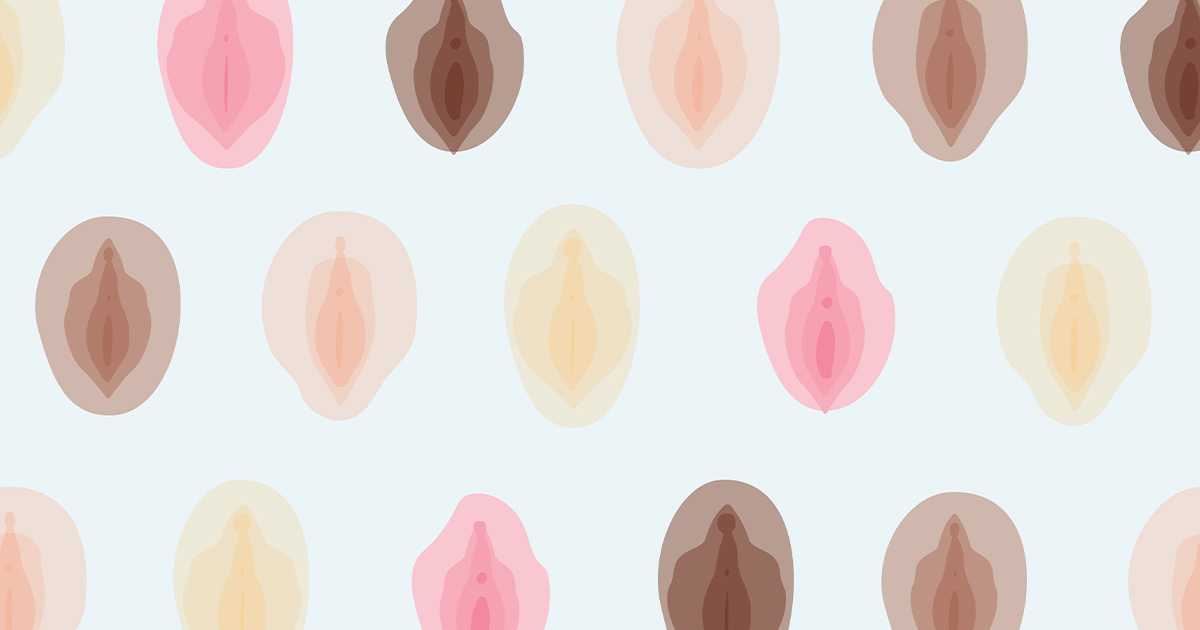
What's Up, Down There
What Does A Healthy Vagina Look Like?
Have you ever wondered, “Is my vagina normal?” If so, you’re definitely not alone! Vaginas aren’t exactly a topic we chat about over coffee, and unless you paid close attention in middle school health class – or peeked at that puberty book your mom handed you – most of us aren’t taught what’s truly “normal.”
If you’re looking to feel more confident and informed about your body, you’re in the right place. In this edition of What’s Up, Down There?, we’re diving into vaginal anatomy and the natural variations you might see. Spoiler alert: there’s a wide range of normal when it comes to color, shape, and appearance. That said, there are certain signs to watch for that might warrant a check-in with your Axia Women’s Health provider.
First, a quick anatomy refresher
When we talk about the “vagina,” most people are actually referring to the vulva — the external parts of your genital area. This includes:
- Labia majora (outer lips)
- Labia minora (inner lips)
- Clitoris
- Urethral opening
- Vaginal opening
The vagina itself is the internal canal that connects to the cervix and uterus.
Knowing the difference is helpful when understanding your body and talking to your healthcare provider. It also helps you understand where changes may occur, and when it’s worth a closer look.
What’s normal: color, shape, and size
Color: Healthy vulvar skin can vary from light pink to deep brown, depending on your natural skin tone. It’s also normal for the inner labia to be slightly darker or to have some color variation, kind of like how the skin on your lips might differ from your face.
Shape: Labia come in all shapes, sizes, and textures. There’s no one “right” look. Here are nine common variations you might notice:
- Asymmetrical Inner Lips: It’s common for one side of the labia minora (inner lips) to be longer or shaped slightly differently than the other. This asymmetry is completely normal and nothing to worry about.
- Prominent Inner Lips: In some women, the labia minora extend beyond the labia majora (outer lips) on both sides. They might be only slightly visible or more noticeable, both are healthy and normal variations.
- Longer Inner Lips: Some vulvas have inner lips that extend an inch or more beyond the outer lips, sometimes with natural folds or extra skin.
- Slightly Visible Inner Lips: In this shape, the labia minora gently peek through the outer lips. The inner tissue may appear slightly more textured or differently colored.
- Curved Outer Lips: Some labia majora naturally curve inward, forming a soft, horseshoe-like shape that allows the inner lips to show slightly in the front.
- Prominent Outer Lips: A vulva with more pronounced labia majora may appear fuller, rounder, or thicker in texture. In this case, the inner lips may not be visible at all — another healthy variation.
- Longer Outer Lips: For some women, the outer lips naturally extend lower or feel looser in texture. This can change with age, childbirth, or hormonal shifts — and is still considered normal and healthy.
- Smaller or Open Outer Lips: When the labia majora are smaller or set slightly apart, they may give the appearance of being more “open,” allowing the inner lips to be visible. This is simply one of many natural shapes.
- Smaller or Closed Outer Lips: In some vulvas, the labia majora and labia minora are closely aligned, creating a closed appearance. While this shape is often depicted in media, it’s actually one of the less common types in real life.
Size: Just like color and shapes, there is no “normal” labia size. It’s also very normal for the size to change after childbirth or menopause. As long as your labia do not cause discomfort or get in the way of your daily life, there’s no real reason to be concerned.
What’s not normal: when to take a closer look
While variation is normal, there are certain changes worth paying attention to. You should contact your Axia Women’s Health provider if you notice any of the following.
- New lumps, bumps, or growths that don’t go away or feel painful. These could be cysts, warts, or, rarely, something more serious.
- Rashes, sores, or open areas that itch, burn, or ooze could possibly be a sign of an infection, irritation, or a sexually transmitted infection (STI).
- Persistent redness, swelling, or pain that doesn’t improve with gentle care.
- Changes in discharge, especially if it becomes thick, greenish, gray, or has a strong odor.
- Itching or burning that lasts more than a few days, which may indicate a yeast infection, bacterial vaginosis, or contact irritation.
Long story short, there’s no single “normal” when it comes to vulvas and vaginas. Every body is unique, and variations in color, shape, and size are perfectly healthy. Knowing your normal, paying attention to changes, and checking in with your Axia Women’s Health provider when something feels off are the best ways to keep your vaginal health in check.
If you ever have questions or notice changes and aren’t sure what’s normal, don’t hesitate to schedule an appointment with your Axia Women’s Health provider. Regular annual visits are also a key part of keeping your vagina and overall reproductive health in tip-top shape.



















